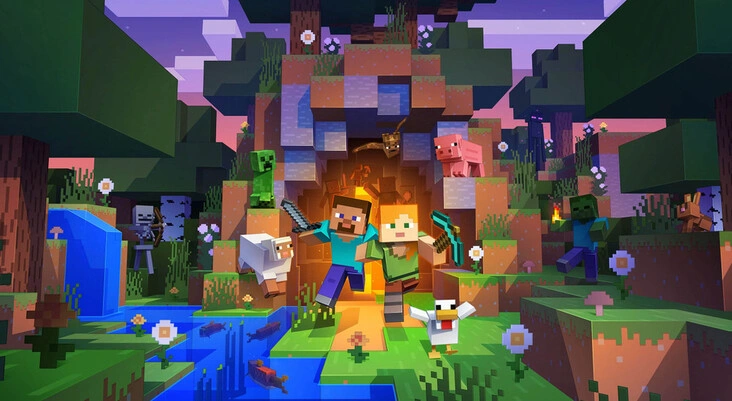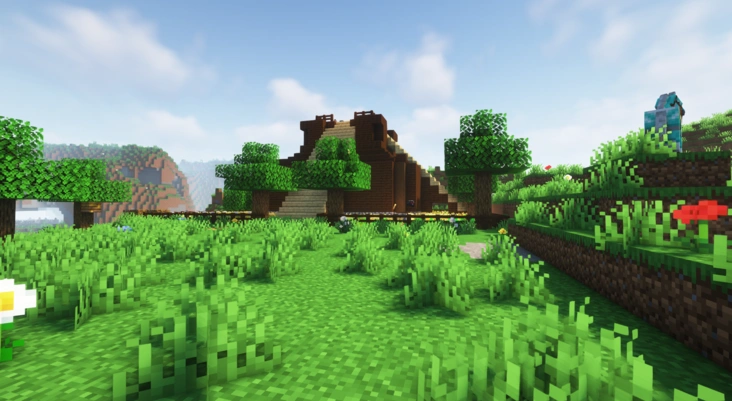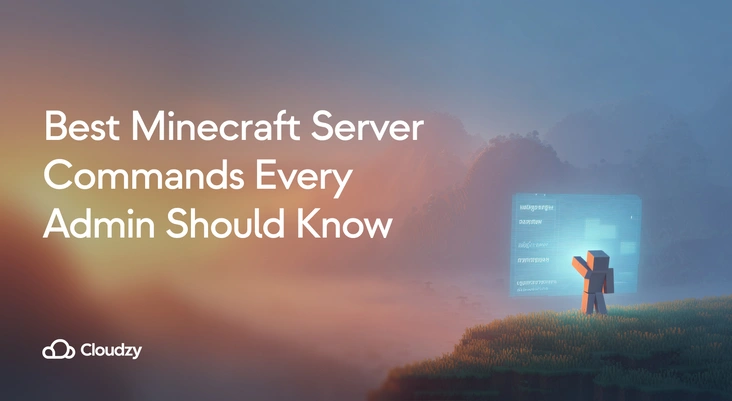You started a Minecraft server to have fun—maybe just a small world for friends, a school club, or even your kids. But now, things are growing. Players are building everywhere, someone’s flying in Survival mode, and griefers might be a command away from destroying your spawn. Welcome to server admin life.
If you want control, stability, and creativity without chaos, you need to master the best Minecraft server plugins and a strong set of commands. Whether you’re running a Paper server or a modded experience, the right tools can make your server a dream instead of a disaster.

What Are Minecraft Server Commands?
Minecraft Server Commands are how you talk to your server. They let you set time, manage players, fix issues, and customize gameplay—all with a few keystrokes. From /ban to /gamerule, they’re the lifeblood of server-side control.
There are different types: in-game commands for operators (OPs), backend Minecraft console commands, and plugin-based admin tools. Whether you’re tweaking game rules or teleporting players, this is your command center. Literally.

How to Use Commands in Minecraft Servers?
You can enter commands in two places: in the game chat or in your server’s console. To type in-game, just press T, type something like /gamemode creative, and hit Enter. In the console (available through your host panel), you leave out the slash and type gamemode creative YourPlayerName.
Some commands require OP permissions. If you’re just starting out, check out How to Make a Minecraft Server to learn how to set things up, and Backup a Minecraft Server regularly before testing powerful commands. You’ll thank yourself when someone runs //set lava over your main spawn by accident.

How to Become an Operator (OP) on a Server?
Being an operator unlocks all the admin commands Minecraft servers support. You can become one by typing op YourUsername in the server console. Once you’re OP, you get permission to run advanced commands like /kick, /ban, /gamerule, and plugin-based commands like /home or /warp—depending on what plugins you’ve installed.
Want full control? Secure Your Minecraft Server on a VPS to prevent unauthorized OPs, DDoS attacks, or rogue plugins.

Essential Minecraft Commands for Admins
Picture this: it’s your second week running a server. Someone built a mansion in the sky, it’s casting shadows on your carefully terraformed garden, and now mobs are spawning everywhere. You run /tp to investigate, use /weather clear to stop the endless rain, and /setworldspawn to move the chaos elsewhere.
Commands like /gamemode, /ban, /whitelist, and /save-all become second nature. They’re more than just tools—they’re your admin Swiss Army knife. Knowing essential Minecraft server commands and the right Minecraft commands for server owners can be the difference between smooth sailing and a meltdown.

World Management Commands (Time, Weather, Spawn)
Controlling the environment keeps your world playable—and enjoyable. Use /time set day to skip night when creepers are getting out of hand. Toggle rain or thunderstorms with /weather clear or /weather thunder.
And don’t forget /setworldspawn to choose where new players land. Pair it with /spawnpoint to set personal respawn locations. You’ll also love /gamerule doDaylightCycle false if you want eternal sunshine over your medieval market square.
For plugin-enhanced world control, EssentialsX is a must. It extends these features with warp points, homes, and more.

Player Management Commands (Kick, Ban, TP, Whitelist)
Let’s say a new player logs in and immediately asks for OP. Suspicious. When they start flying in Survival, you check with /gamemode PlayerName. If they’re cheating, /kick gives them a warning. If they keep it up, /ban PlayerName ends the drama.
Whitelist mode is perfect for private servers. Use /whitelist on to lock the server down, then /whitelist add PlayerName to invite people manually.
Want teleportation control? /tp, /tphere, and /teleport save time and help moderators get around quickly.
Need even more? The LuckPerms plugin gives you tiered permission systems so trusted moderators can use certain Minecraft operator commands—without full OP powers.

Troubleshooting and Debug Commands
Suddenly the server is lagging. Players report rubber-banding, and chat is delayed. You jump into action with /tps (if you’re running Paper), /lagg check (via ClearLag), or use /co inspect with CoreProtect to see if someone just triggered a 5,000-block TNT chain.
If the server starts acting weird after changes, run /reload (though use it carefully—it can break plugins), or reboot via the console with stop and then restart.
And when griefing happens, /co rollback t:5m r:30 brings everything back—like it never happened.

Tips for Safe and Effective Command Use
Commands are powerful, but they can also go nuclear. Accidentally running /kill @e will wipe out mobs… and also item frames, armor stands, and even villagers. Oops.
To avoid disasters, always test new commands on a separate dev world or run small-scale tests first. Keep backups before major events or plugin installs. If you want true peace of mind, go with Minecraft VPS Hosting, where you can snapshot your entire server.
Remember: great power comes with great /deop responsibility.

Server Management Commands
Behind the scenes, you’ll also use backend MC server commands to manage uptime, player access, and more. Use stop to safely shut down your server, op or deop to manage permissions, and whitelist on to temporarily go private.
Most of these are executed from your host dashboard or terminal, and they’re perfect for automation or remote fixes when you’re not in-game. Hosting from a reliable provider? Tools like automated restarts, crash detection, and mod installer scripts can make your life easier. If not, it’s time to explore the Best Minecraft Server Hosting in 2025.

Basic Server Commands
Before you dive deep into mods or massive plugins, master the basics: /say to broadcast, /list to see who’s online, /save-all to force a world save, and /difficulty hard to crank up the challenge.
Need a quick cheat day? /give PlayerName diamond_sword still works in a pinch (or if you want to reward your top builder). Just don’t forget to turn off Minecraft server cheats afterward if you’re trying to keep it vanilla.

Conclusion
Managing a Minecraft server is equal parts creativity and command-line wizardry. You’re building a world, maintaining a community, and keeping chaos at bay with just a few well-placed slashes.
The more you learn your tools—plugins like EssentialsX, CoreProtect, LuckPerms, and smart use of admin and console commands—the more stable, fun, and customized your server becomes.
So go ahead. /op YourName. Build the dream world. And don’t forget to run /save-all before you log out for the night.

One thought on “Best Minecraft Server Commands Every Admin Should Know”
Really appreciate how this guide breaks down theMinecraft Server Comment Creation difference between in-game commands and console commands—especially helpful for newer admins. One thing that’s been a game-changer on my server is using `/gamerule doFireTick false` to prevent accidental fire spread. Might be worth mentioning for anyone managing large builds or survival towns!